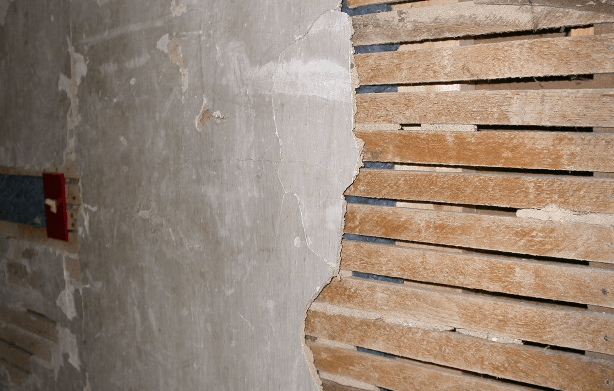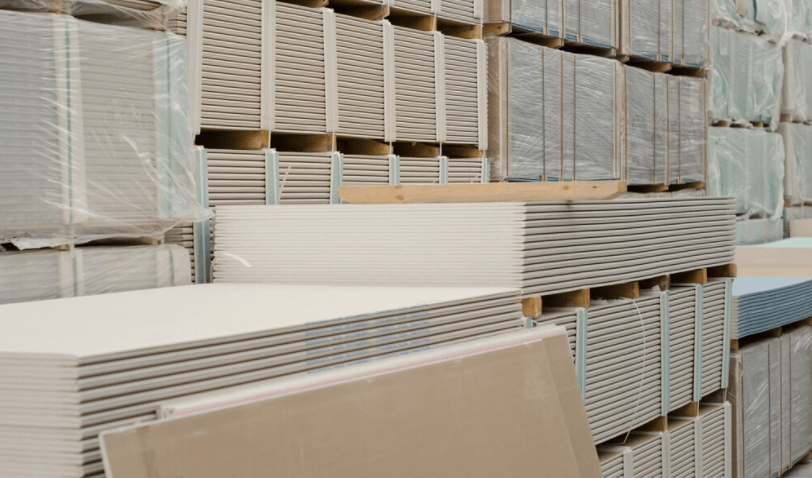Drywall is one of the most important construction materials used today.
If you don’t know what it is — take a look around your home. There’s a good chance that the walls finished around you are drywall.
Here’s a little fun fact — drywall was actually created in 1916 but didn’t go mainstream until the 1940s, thanks to the baby boom. Before drywall, we used wood panels/planks to finish homes around the world. We call it Lath & Plaster. You can still find lath & plaster today on buildings built before the 1950s.

Lath and plaster techniques were used from the 1700s to the early/mid-1900s. Builders and homeowners leaned on it because it’s strong, soundproof, and fire-resistant. Because it requires three coats of plaster, your finished wall ends up being about 1.25 inches thick.
It comes with a lot of issues though…
- Doesn’t Settle Well – Buildings settle over time and plaster is hard and brittle — leaving it vulnerable to cracks. Fixing cracks on a plaster wall is way more difficult and requires professionals to do a good job.
- Makes Rewiring Annoying – It also makes rewiring your home more of a challenge. Its tough material can create a roadblock for electricians to run new wires through your wall… considering they have to try to cut through 1.25 inches of thick plaster.
- Insulation Issues – Wood blocks and plaster obstructions don’t allow for even distribution. Meaning entire portions of walls won’t receive any insulation.
- Expensive – Nowadays it’s a lot cheaper and easier to get your home finished with drywall. Because of how rarely it’s used, most companies don’t offer plaster services today.
And that’s why people leaned towards using drywall more than lath and plaster.

But why exactly did drywall get so popular?
- Cheaper – Plaster requires more specialized skill than drywall installation. You’re looking at about two to three times the cost in labor alone to lath and plaster your walls instead of using drywall.
- Time Saving – Drywall is fast to manufacture and easy to install. Easier to meet deadlines if you’re building your home (as long as you use a good crew).
- Better For Wiring – Worked better with wiring practices as electricity became the standard in most homes after the 1930s.
- Easier To Repair – Whether you do a DIY fix or hire a professional — having lath and plaster in your home is harder to repair than drywall.
- Versatile Options – Drywall comes in a bunch of different sizes, depending on what your needs are.
Like any other material, it’s not perfect. Because standard drywall comes in 1/2inch — it’s worse than lath & plaster for soundproofing, waterproofing, and fireproofing.
This is why drywall comes in different types to make up for it, such as:
- Mold-resistant drywall – Also called blue board/cement board. Commonly used in showers to prevent water damage.
- Fireproof drywall – Type X fire resistant drywall. 5/8inches adss extra thickness to provide more fireproofing to your walls.
- Soundproof Drywall – SilentFX® QuickCut noise-reducing drywall. Gives you that extra soundproofing you need.
Looking at the facts, it’s easy to see how drywall was superior. Although there can be certain situations where you can use lath and plaster today… we recommend using drywall for all your projects to save yourself money and time.
"ThreeStepsDrywall has been helping homeowners across Ottawa for more than 15 years. Family-run and operated — we’re happy to answer any questions you have on our articles or drywall projects you want to tackle. You can contact us here."
